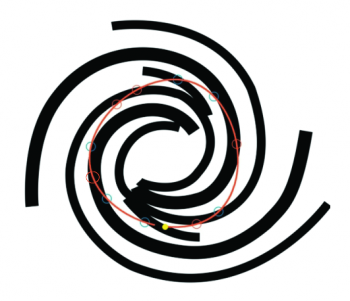The global warming scientists at the IPCC struggle to explain the lack of warming.
The global warming scientists at the IPCC struggle to explain the lack of warming.
Though scientists don’t have any firm answers, they do have multiple theories. Xie has argued that the hiatus is the result of heat absorption by the Pacific Ocean — a little-understood, naturally occurring process that repeats itself every few decades. Xie and his colleagues presented the idea in a study published last month in the prestigious journal Nature.
The theory, which is gaining adherents, remains unproved by actual observation. Surface temperature records date to the late 1800s, but measurements of deep water temperature began only in the 1960s, so there just isn’t enough data to chart the long-term patterns, Xie said. [emphasis mine]
This theory, that the oceans are absorbing all the heat, is one of the new favorite explanations for the lack of warming by advocates of global warming. However, as this article correctly notes, we have no good data to support it, and even fewer theories to explain it.
The truth is really summed up by the article’s last paragraph:
“This unpredicted hiatus just reflects the fact that we don’t understand things as well as we thought,” said Roger Pielke Jr., a professor of environmental studies at the University of Colorado in Boulder and vocal critic of the climate change establishment. “Now the IPCC finds itself in a position that a science group never wants to be in. It’s in spin management mode.”
The global warming scientists at the IPCC struggle to explain the lack of warming.
Though scientists don’t have any firm answers, they do have multiple theories. Xie has argued that the hiatus is the result of heat absorption by the Pacific Ocean — a little-understood, naturally occurring process that repeats itself every few decades. Xie and his colleagues presented the idea in a study published last month in the prestigious journal Nature.
The theory, which is gaining adherents, remains unproved by actual observation. Surface temperature records date to the late 1800s, but measurements of deep water temperature began only in the 1960s, so there just isn’t enough data to chart the long-term patterns, Xie said. [emphasis mine]
This theory, that the oceans are absorbing all the heat, is one of the new favorite explanations for the lack of warming by advocates of global warming. However, as this article correctly notes, we have no good data to support it, and even fewer theories to explain it.
The truth is really summed up by the article’s last paragraph:
“This unpredicted hiatus just reflects the fact that we don’t understand things as well as we thought,” said Roger Pielke Jr., a professor of environmental studies at the University of Colorado in Boulder and vocal critic of the climate change establishment. “Now the IPCC finds itself in a position that a science group never wants to be in. It’s in spin management mode.”




